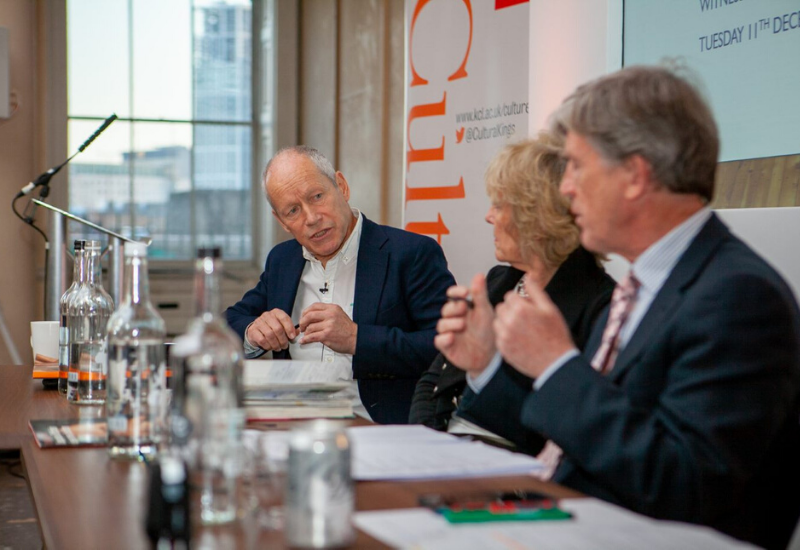Soon after coming to power in 1997, Tony Blair's Labour government set up a Task Force to define and measure the 'creative industries' for the first time. The following year the Department of Culture, Media & Sport (DCMS) Creative Industries Mapping Document was published. In the period since, this document has been enormously influential and the subject of heated debate.
Whilst much has been written about the Mapping Document and its naming of a new sector of the economy, the story of exactly why and how it was written has not been fully told. To do so, Dr Jonathan Gross conducted a series of interviews with key participants in the document’s creation, culminating in a ‘witness seminar’ held at Somerset House on 11 December 2018.
 Baroness Deborah Bull at the witness seminar held at Somerset House, London, on 11 December
Baroness Deborah Bull at the witness seminar held at Somerset House, London, on 11 December
The report addresses the following three questions:
- Why was the 1998 Creative Industries Mapping Document created?
- How was the 1998 Creative Industries Mapping Document created?
- What were the consequences?
Highlights from the report
- The development of the 1998 Creative Industries Mapping Document was ad hoc, and undertaken with extremely limited resources. The process of defining the creative industries - and establishing initial data for the sector - was far from systematic.
- In 1998 the available data with which to map the creative industries was very limited. It was not until the 2001 iteration of the Mapping Document that data could be established on a more reliable basis.
- Caution should be exercised in reading the Mapping Document as a very central or deliberate part of the New Labour project. While conditions within Blair’s Labour Party proved conducive to the mapping work, it was essentially driven by Chris Smith as the first Secretary of State for Culture, Media and Sport and a small group of people with who he was working.
- The Mapping Document was both an enormous success and a disappointment. It succeeded in naming a new sector of the economy. The consequences of this have been enormous. On the other hand, its direct impact on UK public policy was considerably smaller than its authors and commissioners had hoped.
- After 20 years of controversy, even some of those most centrally involved in the Task Force now take the view that the notion of the 'creative industries' was valuable at the time, but has since been superseded. New vocabularies and models are needed – and are being developed – to understand the role and significance of creativity within the economy.
- The report demonstrates the need to pay attention to different scales of explanation at the same time. In the present case, this includes: macroeconomic transformations, the repositioning of a political party, the machinery of government, and the specific aims and ideas of particular people. Understanding both the alignments and tensions between these multiple causal factors better places us to trace exactly why such a policy document came into being – and how it came to have the specific characteristics and consequences that it did.

(Left to Right) John Newbigin, Janice Hughes and Ian Hargreaves

(Left to Right) John Newbigin, Janice Hughes, Ian Hargreaves and Gail Rebuck

(Left to Right) John Newbigin, Janice Hughes, Ian Hargreaves and Gail Rebuck

(Left to Right) John Newbigin, Janice Hughes, Ian Hargreaves and Gail Rebuck
Photos taken at the witness seminar featuring John Newbigin OBE, Janice Hughes CBE, Ian Hargreaves CBE and Baroness Gail Rebuck DBE
The author of this report is Dr Jonathan Gross, a Research Fellow and Teaching Fellow in the Department of Culture, Media & Creative Industries (CMCI), King's College London.